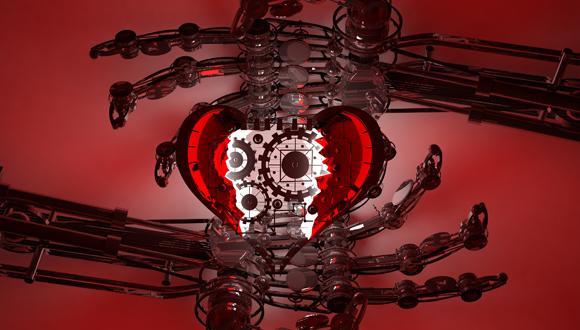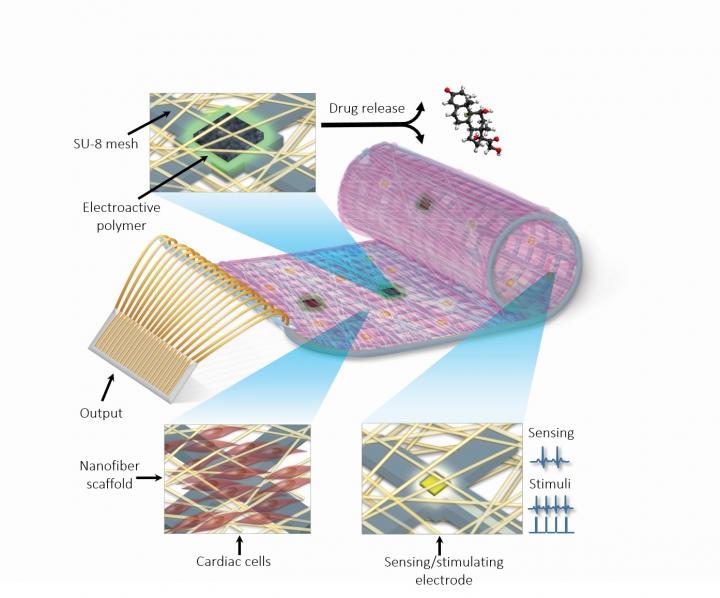With heart disease as the leading cause of death in the United States, and while 25% of the people on the national U.S. waiting list for a heart dying before they ever receive one, researchers have been working diligently to discover alternatives.
Engineers from Tel Aviv University have come up with something: the “cyborg heart patch,” which combines electronics with living tissues to create a self-regulating cardiac patch. The patch contracts and expands like human heart tissue but regulates itself like a machine. According to the researchers responsible, its capabilities surpass those of human tissue alone.

The invention was developed by Professor Tal Dvir and PhD student Ron Feiner of TAU’s Department of Biotechnology, Department of Materials Science and Engineering, and Center for Nanoscience and Nanotechnology. The two hope that their science-fiction device can now move cardiac research forward.
“Until now, we could only engineer organic cardiac tissue, with mixed results. Now we have produced viable bionic tissue, which ensures that the heart tissue will function properly,” said Dvir.
The new cyborg cardiac patch not only replaces organic tissue but also ensures its sound functioning through remote monitoring.
“We first ensured that the cells would contract in the patch, which explains the need for organic material,” said Dvir. “But, just as importantly, we needed to verify what was happening in the patch and regulate its function. We also wanted to be able to release drugs from the patch directly onto the heart to improve its integration with the host body.”
How it works
Dr. Dvir and the team created the patch using thick bionic tissue suitable for transplantation. The engineered tissue is equipped with electronics that sense tissue function and then provide electrical stimulation as needed. In addition, electroactive polymers are integrated into the electronics,a nd when activated, are able to release medication, on demand.

“Imagine that a patient is just sitting at home, not feeling well,” said Dvir. “His physician will be able to log onto his computer and this patient’s file, in real time. He can view data sent remotely from sensors embedded in the engineered tissue and assess exactly how his patient is doing. He can intervene to properly pace the heart and activate drugs to regenerate tissue from afar.
The team’s long-term goal is for the patch to be able to regulate itself, with no doctor intervention. So, for example, if it senses inflammation, it can release an anti-inflammatory drug. If detects a lack of oxygen, it can release molecules that recruit blood-vessel-forming cells to the heart.”
Dr. Dvir is also looking into other applications, such as using it for the brain and spinal cord to treat neurological conditions.
“This is a breakthrough, to be sure,” said Dvir. “But I would not suggest binging on cheeseburgers or quitting sports just yet. The practical realization of the technology may take some time. Meanwhile, a healthy lifestyle is still the best way to keep your heart healthy.”

Comments are closed, but trackbacks and pingbacks are open.